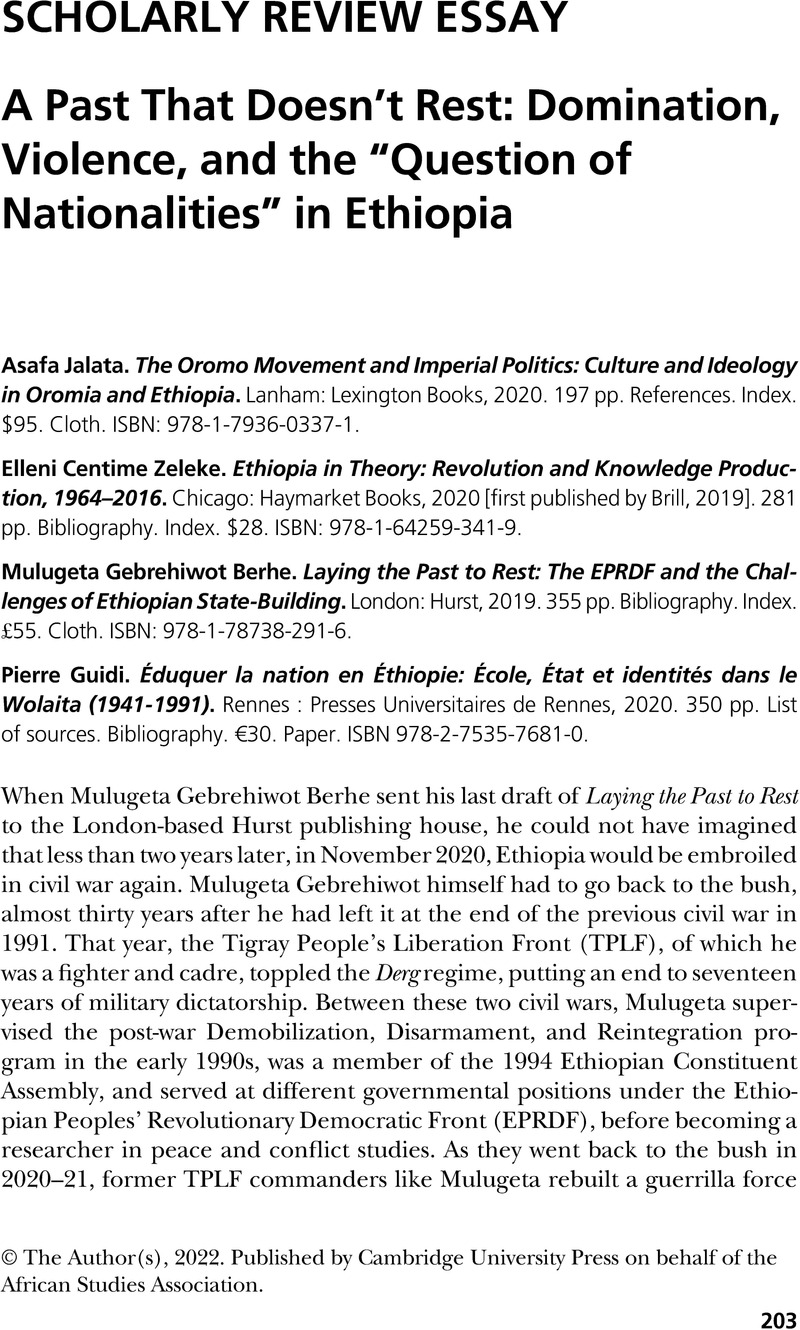Crossref Citations
This article has been cited by the following publications. This list is generated based on data provided by Crossref.
Alemu, Amsale
2024.
Clandestine Issues.
Radical History Review,
Vol. 2024,
Issue. 150,
p.
161.



